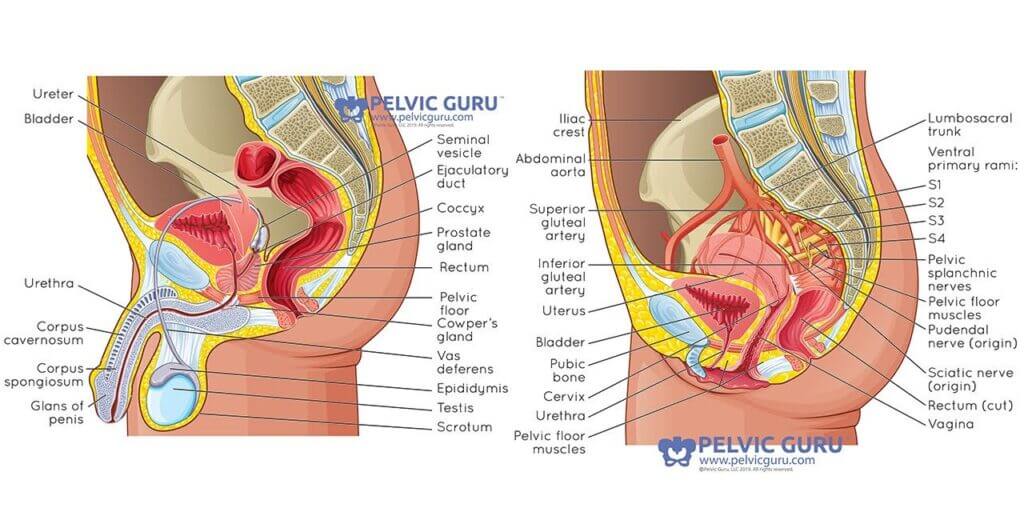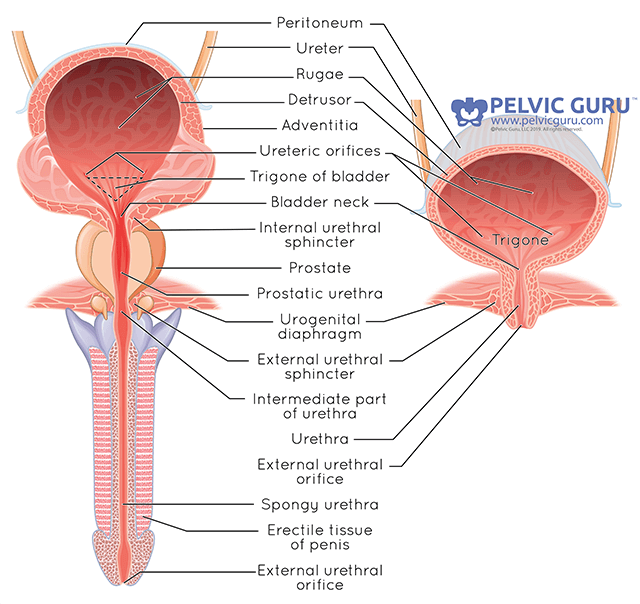
How The Bladder Works
Seems like an easy question to answer, right? Sit or stand by a toilet and nature runs its course. Easy peasy! Unfortunately, for roughly 200 million people worldwide, urination is just not that simple.
TRY THIS: If you push on that hard bone at the very bottom of your stomach, then move your hand just above it onto the soft part of your abdomen, push in there and you will be pushing into your bladder.
BLADDER BASICS
Now we’ll discuss how the bladder works. The bladder is a muscular organ that lives within the bowl of the pelvis. It sits on top of the pelvic floor muscles, towards the front of your body. Your kidneys send urine into your bladder via two ureters. There is an inner lining, and it can be very sensitive to dietary irritants for many people.
The bladder connects to the outside world via the urethra. Think of it as a tube that is surrounded by specific pelvic floor muscles. It has two main functions: both storing AND releasing urine, and being able to switch between the two is the key to continence. In order to maintain your continence, there are several components that need to interact and coordinate well with one another.
THE WHOLE RELIES UPON THE PARTS
The first component of continence involves the nervous system. Your nervous system controls many urinary commands, such as voluntary urination control and the length of time your bladder muscle contracts. It also coordinates your bladder contractions, in tandem with your pelvic floor muscles relaxing, to allow for urination, and then switches itself back to storing mode! That is how the bladder works; in coordination with other muscles and your nervous system.
OTHER COMPONENTS INCLUDE:
- The ability of the bladder muscle to expand and contract
- Sensory awareness to identify when the bladder is full
- Mobility required to reach the bathroom
- The dexterity required to remove clothing in time to reach the toilet
BLADDER OR BALLOON?
The bladder is a muscular balloon relaxing to expand and store, and contracting to expel and urinate.
The bladder fills slowly over the course of 3 hours. About 15 drops of urine per minute. This means normal bladder voiding is roughly every 2-3 hours throughout the day. If you are going more than twice, at night, this could be considered excessive. Your first sense to void occurs around the half cup mark.
REMEMBER! The bladder can hold 1.5-2.5 cups of water so don’t rush to the bathroom at that first sensation.
Use this quick guide to help judge your urinary bladder function. Now that you know how the bladder works, you have a better understanding of your body and the pelvic floor.
However, knowing a bit about how the bladder works may not solve all your problems. If you feel that would benefit from pelvic floor physical therapy or think you are experiencing symptoms that may require diagnosis, you can book a FREE 20-minute consultation HERE.
Or, if you’d like to learn more about all things pelvic floor health, head over to Instagram! You can always reach out in the DM’s if you have any questions!
More content you may like:
Silences We Keep: Urinary Incontinence
The Clitoris: Increasing Orgasmic Capacity











Sorry, the comment form is closed at this time.